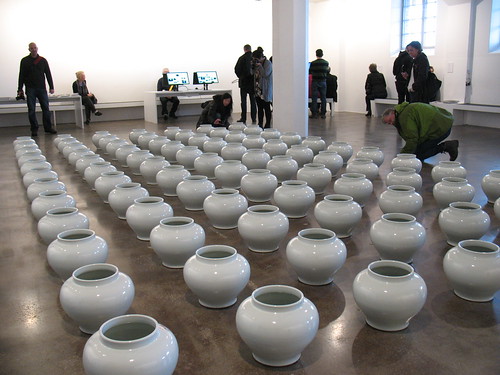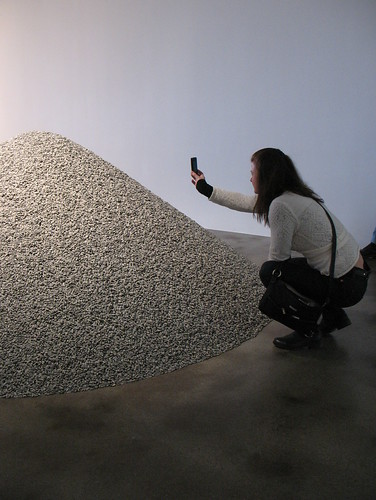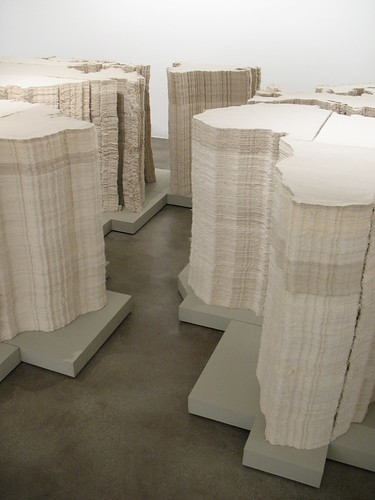Art by Ai Wei Wei
When we were in Stockholm in April we went to see the art exhibit by Chinese artist and government critic Ai Wei Wei. I knew very little about him before I went, only that he had been imprisoned by the Chinese authorities and thereby disappeared for months. The art installation was held in a former harbor magazine, a gallery named appropriately Magasin 3, and it was a suitable place right in the harbor, a place for international trade and global influxes and outfluxes over centuries.
Here is a selection of some works that I found particularly interesting.

The exhibit showed many of his pieces, which are often everyday objects remade by local artisans with special techniques and painstaking, time-consuming efforts. When you walk into the exhibit you see 96 large, white Chinese porcelain vases standing on the floor. When you walk around them, you realize that they have Chinese art on them on the other side, increasingly broader and broader patterns.

The vase design is a copy of the most expensive Chinese object ever sold, an ancient vase with the design called "Ghost Gu Coming Down the Mountain", which is also the name of this installation from 2005. Fascinating! It just makes you stop and think about design, partiality, copying of value and how you can take something unique and make a pattern out of it. I loved it.

Similarly, was a giant heap, maybe 1.5 m tall (5 feet) of handpainted porcelain sunflower seeds. From a distance it looks like plain gravel, but when you get really close you see the ceramic pieces up close, each individual, each different, but from a distance they all looked the same. Just like when you look at people or countries from a distance - everybody looks the same, but up close we are all different. It is a matter of scale and distance.

A World Map made out of cotton fabric, stacked high and cut out with precision into each continent... I never imagined that it would be so different to see the continents stack high, instead of seeing them just marked on a piece of paper. Another fantastic thing is that you could walk around and see the world from the North, the East, the West, and sometimes below or at the crustal level if you crouched a bit. Such a simple piece of art and so thoughtful and thought-making. I love it!

The Norwegian coastline from the North, as seen through Ai Wei Wei's cut fabric in his World Map.




No comments:
Post a Comment